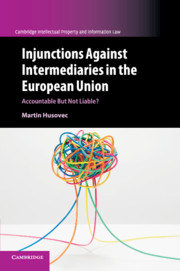Injunctions against Intermediaries in the European Union
In the European Union, courts have been expanding the enforcement of intellectual property rights by employing injunctions to compel intermediaries to provide assistance, despite no allegation of wrongdoing against these parties. These prospective injunctions, designed to prevent future harm, thus hold parties accountable where no liability exists. Effectively a new type of regulatory tool, these injunctions are distinct from the conventional secondary liability in tort. At present, they can be observed in orders to compel website blocking, content filtering, or disconnection, but going forward, their use is potentially unlimited. This book outlines the paradigmatic shift this entails for the future of the Internet and analyzes the associated legal and economic opportunities and problems.
- Explores an emerging type of remedy - an injunction that can compel innocent third parties to assist in the enforcement of intellectual property rights
- Reconceptualizes our interpretation of remedies, which allows the reader to improve their understanding of the current developments with insights from legal history, economics, and recent practice
- Offers solutions on how to prevent or limit some of the problems that the broad notion of injunction against intermediaries allows
Product details
December 2018Paperback
9781108400213
295 pages
230 × 153 × 17 mm
0.44kg
Available
Table of Contents
- Part I. Social and Economic Context:
- 1. Introduction to the problem
- 2. Enforcement economics
- Part II. European Framework:
- 3. Historical legislative developments
- 4. European intermediary liability framework
- Part III. Accountable but Not Liable: Injunctions for Assistance:
- 5. Right to third-party information
- 6. Conditions for injunctions against intermediaries
- 7. Scope of injunctions against intermediaries
- 8. Limits of injunctions against intermediaries
- Part IV. Legal Traditions:
- 9. Injunctions in civil law: Germany
- 10. Injunctions in common law: England
- Part V. Outlook and Conclusions:
- 11. Global context
- 12. Conclusions.






